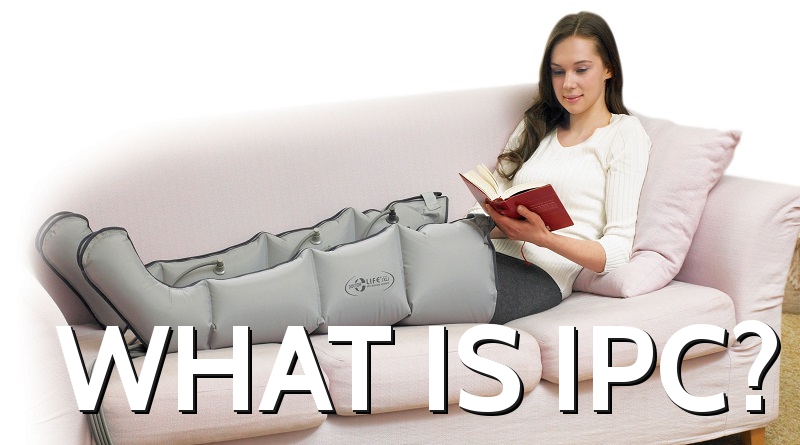Intermittent Pneumatic Compression (IPC) – What Is It?
What Is Intermittent Pneumatic Compression (IPC)?
Intermittent Pneumatic Compression (IPC) is a therapeutic technique used to improve venous circulation in the limbs of patients who suffer oedema or the risk of deep vein thrombosis (DVT) or pulmonary embolism (PE).
Typically medical devices are used that include an air pump and inflatable auxiliary sleeves, gloves or boots.
These devices are called Sequential Compression Devices, which we will discuss later.
These inflatable devices enclose the limb requiring treatment, and when activated, the pump fills the air chambers of the jacket in order to pressurize the tissues in the limb.
Blood and lymph is then forced out of the pressurized area. Shortly after this pressure is reduced and blood flow is allowed back into the limb. This technique ensures the movement of venous blood.
The following video explains the effect this technique has on the body:
Who Is Intermittent Pneumatic Compression For?
This technique would benefit anyone experiencing the following:
- Lymphedema (Leg & Foot Swelling)
- Diabetes
- Sport injuries
- Migraines
- Poor blood circulation
- Venous insufficiency
- Premenstrual-syndrome
- Knee problems, Tension, Varicose Veins, Water Retention, Cramps, Pain and Soreness
- Neuropathy and other circulatory and peripheral vascular conditions
- Frequent flyers
What Are The Benefits of Intermittent Pneumatic Compression?
Reported benefits include:
- Greater energy
- Improves circulation, which nourishes cells and improves waste elimination
- Enhanced sleep quality
- Releases nerve compression
- Improvements in pain, stiffness, range of motion, hand grip strength and overall function of the joints
- Relieves migraine pain
- Pumps oxygen and nutrients into tissues and vital organs
- Strengthened immune system
- Leg and foot massage can normalise hormones and the risk of birth complications
- It is proven effective in reducing stress by decreasing the stress hormone cortisol, which in turn helps boost the immune system
- Releases endorphins/amino acids that work as the body’s natural painkiller
- Reduces spasms and cramping
What Do Studies Say?
The evidence for using this technique overall is positive.
Studies show that this technique is proven to reduce limb size in lower limb Lymphedema, without damaging the tissue.
It has also been shown to reduce the risk of deep vein thrombosis (DVT) and improve survival rate of stroke survivors.
It is linked with increased healing with cases of venous ulcers.
It has also been shown to potentially improve fracture and soft-tissue healing.
The devices which are used in this technique are called Sequential Compression Devices.
Sequential Compression Devices For Intermittent Pneumatic Compression
Sequential Compression Devices (aka Leg Compression Devices or Air Compression Leg Massager devices) utilize sleeves with separated areas or pockets, which work by inflating and squeezing on the appendage in a “milking action.”
These devices used to only be available in hospitals to treat severe muscular and circulatory problems.
Today however the price of these devices has dropped significantly, and now anyone can afford one for use at home.
Where To Buy Sequential Compression Devices For Intermittent Pneumatic Compression?
Check out our article where we take an in depth look at sequential compression devices for use at home by clicking this link.
Also, check out the following video for an overview of a typical device that can be used at home, and finally thanks for reading.
Sources
https://en.wikipedia.org/wiki/Intermittent_pneumatic_compression
https://www.ncbi.nlm.nih.gov/pmc/articles/PMC4062105/
http://www.thelancet.com/journals/lancet/article/PIIS0140-6736(13)61050-8/abstract
http://www.sciencedirect.com/science/article/pii/S0741521410020690


Thank you for explaining that there are improvements in pain, stiffness, and range of motion. I had a friend who got injured while playing soccer and has been having problems with range of motion. I’ll have to look into medical units that can provide ICP.